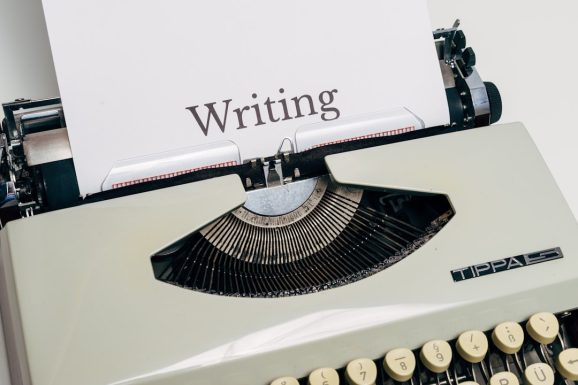In the ever-evolving world of artificial intelligence, tools like ChatGPT have revolutionized how we interact with language and generate content. However, for all its advancements, users and developers have noted an increasingly common stylistic issue: the overuse of the em dash (—). While the em dash is a powerful punctuation mark when used sparingly and purposefully, its excessive use can result in cluttered, overly dramatic, or informal text that detracts from clarity and professionalism.
This article will explore why ChatGPT tends to overuse the em dash, the problems it may cause in professional or technical contexts, and several practical methods to mitigate this behavior for more refined and intentional writing.
Understanding the Em Dash and Its Usage
All Heading
The em dash is a versatile punctuation mark used to create emphasis, signal abrupt changes in tone, or insert additional information. Human writers wield it (often stylishly) to break monotony, create rhythm, or substitute for other punctuation like commas, colons, and parentheses.
However, in AI-generated content, the em dash’s role becomes exaggerated. Because the model has been trained on vast datasets from blogs, novels, articles, and forums—many of which use the em dash liberally—it has learned this stylistic choice as a statistically common pattern. As a result, it replicates that pattern in its responses, frequently favoring em dashes over more traditional punctuational clarity.

Why Overuse Matters
While there’s nothing inherently wrong with em dashes, overreliance on them can signal stylistic inconsistency and impact readability. Here’s why the problem deserves attention:
- Reduced Clarity: Too many em dashes can fragment sentences, reducing their clarity and coherence.
- Unprofessional Tone: In formal contexts such as academic writing or corporate documentation, overuse of the em dash may come across as overly casual or even confusing.
- Reader Fatigue: Repeatedly encountering em dashes can distract the reader, especially when better-suited punctuation could be more effective.
Recognizing these pitfalls is the first step toward correcting them—particularly when using tools like ChatGPT to produce high-quality, professional prose.
Strategies to Minimize Em Dash Overuse in ChatGPT
While ChatGPT does not have a built-in toggle to control punctuation preferences, users can take several actionable steps to guide the model’s behavior and preferences.
1. Use Clear and Direct Prompting
Clear and explicit prompts influence ChatGPT strongly. If you notice the model overusing the em dash, adjust your prompts to steer the style accordingly. For instance:
- “Write a professional paragraph on climate change. Avoid using em dashes.”
- “Summarize the topic without stylistic punctuation such as em dashes or exclamation points.”
- “Please use formal tone and standard punctuation—commas and periods only.”
This gives ChatGPT a framework to restrict its stylistic choices, often resulting in cleaner, more professional text.
2. Utilize System-Level Instructions
In some implementations such as ChatGPT API chat sessions, developers can set a system message to enforce stylistic norms across an interaction. For example:
“You are a formal writing assistant. Avoid using em dashes or other nonstandard punctuation. Use commas, colons, and semicolons appropriately instead.”
System instructions are particularly effective in longer conversational chains or customized applications built on GPT models. They help align the AI’s behavior with specific editorial guidelines.
3. Implement Post-Processing Adjustments
If you’re integrating ChatGPT output into pipelines or applications, you can create simple scripts or text processing steps to:
- Replace em dashes with appropriate punctuation (comma, colon, or semicolon).
- Flag excessively long sentences which often contribute to em dash overuse.
- Enforce punctuation style guides using grammar tools or custom linting rules.
Such strategies can automate part of the review process, especially in content-heavy workflows where manual editing is not practical.
4. Fine-Tune a Custom Model (Advanced)
For enterprises or researchers with access to model customization options, another viable strategy is fine-tuning a GPT model with specific style constraints. Feeding the model with examples that avoid em dashes and reinforce correct punctuation usage can help shift its statistical preferences.
This approach requires technical resources and a dataset properly annotated to reflect the target writing style. However, once complete, it allows for a tailored assistant that better adheres to editorial standards.
5. Incorporate Human-Guided Review
Even the best AI-generated content benefits from human editing. Proofreading the output to catch overuse of em dashes—and replacing them with commas or splitting up sentences—can significantly improve clarity and delivery.
Consider the following example:
Original: “The guidance was clear—follow the instructions closely—or face delays.”
Edited: “The guidance was clear. Follow the instructions closely to avoid delays.”
The revised sentence is more direct and appropriate for most business or formal settings. Incorporating a human-centric review process helps catch stylistic missteps that even a guided AI might miss.

Alternatives to the Em Dash
If the em dash is being overused, it’s important to offer ChatGPT functional alternatives within prompts. The most suitable replacements include:
- Commas – for adding information in-line without breaking the rhythm.
- Parentheses – for non-essential, side-note-style additions.
- Colons – for introducing explanations, lists, or emphasis.
- Periods – for creating shorter, more digestible sentences.
By suggesting or modeling these sources of variation in user prompts or training data, we can help the model balance expressive freedom with clarity.
Looking Ahead: A Balanced Future for AI-Generated Writing
As sophisticated as ChatGPT has become, it still reflects the patterns and styles present in the data it reviewed during training. If too much content was stylized with em dashes, the model may adopt a skewed sense of how frequently that punctuation should be used.
Moving forward, developers and users alike play a role in refining those tendencies:
- Feedback to developers can shape future updates that introduce stylistic tunability into prompt settings.
- Human-in-the-loop workflows will remain critical to ensuring quality and consistency.
Effective communication is always more important than overly stylized flair. Ensuring that AI-generated writing is clear, formal when necessary, and properly punctuated is key to building trust in these tools—not just for casual use, but for professional and academic environments as well.
Final Thoughts
ChatGPT is a remarkable writing assistant, but like any tool, it requires tuning and guidance to reach its full potential. The overuse of the em dash is not a fatal flaw—it’s a fixable quirk that stems from the model’s mimicry of prevalent stylistic habits online.
By using better prompting, system instructions, editing protocols, and even fine-tuning options, we can bring balance back to punctuation. In the process, we produce writing that not only informs and persuades but also respects the reader’s need for clarity and professionalism.
Much like the em dash itself, balance in language is all about knowing when to pause— and when to let the sentence stand on its own.












Recent Comments